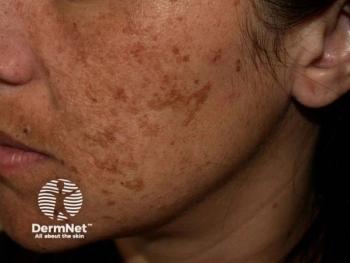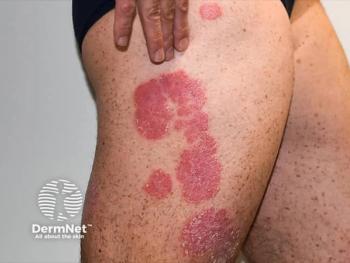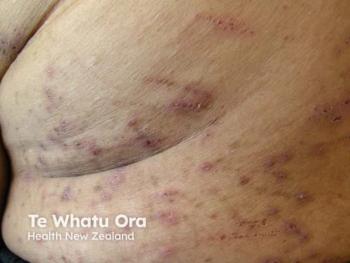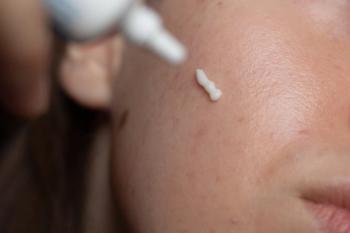
Xerosis Management: Back to Basics with Emollients
Key Takeaways
- Xerosis cutis in atopic dermatitis is linked to barrier dysfunction, necessitating effective management with basic emollients to improve hydration and reduce transepidermal water loss.
- Glycerol and urea-based emollients improve skin hydration, with urea offering additional keratolytic benefits, though higher concentrations may cause irritation.
Explore the effectiveness of basic emollients in treating xerosis cutis associated with atopic dermatitis, enhancing skin hydration and barrier function.
Xerosis cutis—dry, scaly skin—is one of the most frequent and distressing symptoms of atopic dermatitis (AD), often correlating with disease severity and contributing to the itch-scratch cycle. Clinically, xerosis results from barrier dysfunction involving filaggrin deficiency, reduced natural moisturizing factor (NMF), and impaired lipid organization, leading to increased transepidermal water loss (TEWL).1-2
While topical corticosteroids and calcineurin inhibitors are mainstays for managing inflammation in AD, long-term disease control relies heavily on barrier maintenance. Emollients, particularly basic emollients—those without pharmacologically active or “bioactive” agents—remain a core therapeutic modality for addressing xerosis. These products combine humectants (e.g., glycerol, urea), which attract and retain water in the stratum corneum (SC), with occlusives (e.g., petrolatum, paraffin), which prevent water loss.3
A recent targeted literature review evaluated the efficacy of these basic emollients in AD patients with xerosis, focusing on formulations that did not include active botanicals, corticosteroids, or immunomodulatory agents. Several randomized controlled trials and observational studies were analyzed to determine their effectiveness, tolerability, and patient satisfaction.4
Key Findings
Glycerol-containing emollients (10 to 20%) were shown to significantly improve skin hydration and reduce TEWL across multiple studies. Researchers noted one study demonstrated these effects in a double-blind RCT, observing measurable improvement within 4 weeks. However, concentrations above 15% may reduce cosmetic elegance, potentially impacting patient adherence. Lower-concentration products may balance efficacy and acceptability more effectively.
The review found urea-based formulations (5 to 10%) not only improved hydration but also showed keratolytic activity, making them particularly useful in hyperkeratotic or lichenified skin. While higher concentrations offer more robust effects, patients often report stinging or irritation. A 5% formulation tends to be well tolerated while still offering therapeutic benefit in reducing xerosis and pruritus.
Petrolatum and paraffin-based emollients such as Epaderm and Dexeryl remain some of the most effective occlusives available, according to researchers. These agents demonstrate excellent barrier repair properties, particularly in pediatric and elderly patients. Though greasy in texture, their affordability, widespread availability, and low allergenic potential make them ideal for baseline care.
Lactic acid, in low concentrations, has shown promise as a mild keratolytic and hydrating agent, particularly in enhancing skin texture and reducing scaling. The review stated its application may be limited by irritation in sensitive areas, but it can be a useful adjunct for certain patients.
Natural oils (e.g., almond, olive) and hyaluronic acid-based formulations have demonstrated beneficial effects on hydration and pruritus in small trials. Hyaluronic acid, in particular, offers deep hydration with excellent tolerability, and when used in liposomal formulations, may enhance epidermal penetration.
Clinical Relevance
For dermatology clinicians, these findings reaffirm the foundational role of basic emollients in both the acute and maintenance phases of AD management. Key clinical implications include:
- Tailored selection based on patient age, skin type, severity of xerosis, and tolerance. For example, urea is preferable in adults with thickened skin, while glycerol- or petrolatum-based products may be better suited to sensitive skin or pediatric populations.
- Application technique matters. Emollients should be applied liberally (ideally >250 g/week in adults) and immediately after bathing to trap moisture.
Therapeutic adherence is often influenced by cosmetic acceptability. Clinicians should offer options that align with patients' preferences and lifestyle.
Patient education is critical. Emphasize the role of emollients in reducing flare frequency, minimizing corticosteroid use, and maintaining long-term skin health.
Although newer "emollients plus" formulations containing probiotics, ceramides, and botanical extracts are gaining attention, basic emollients remain a cornerstone in evidence-based dermatologic care. Their affordability, accessibility, and proven efficacy make them indispensable tools for managing xerosis cutis in atopic dermatitis.
References
- Wollenberg A, Kinberger M, Arents B, et al. European guideline (EuroGuiDerm) on atopic eczema: part I - systemic therapy. J EurAcad Dermatol Venereol. 2022;36(9):1409-1431. doi:10.1111/jdv.18345
- Wollenberg A, Kinberger M, Arents B, et al. European guideline (EuroGuiDerm) on atopic eczema - part II: non-systemic treatments and treatment recommendations for special AE patient populations. J EurAcad Dermatol Venereol. 2022;36(11):1904-1926. doi:10.1111/jdv.18429
- Moncrieff G, Cork M, Lawton S, Kokiet S, Daly C, Clark C. Use of emollients in dry-skin conditions: consensus statement. Clin Exp Dermatol. 2013;38(3):231-238. doi:10.1111/ced.12104
- Wollenberg A, Barbarot S, Torrelo A. Basic emollients for xerosis cutis in atopic dermatitis: A review of clinical studies. Int J Dermatol. Published online April 23, 2025. doi:10.1111/ijd.17793
Newsletter
Like what you’re reading? Subscribe to Dermatology Times for weekly updates on therapies, innovations, and real-world practice tips.


















